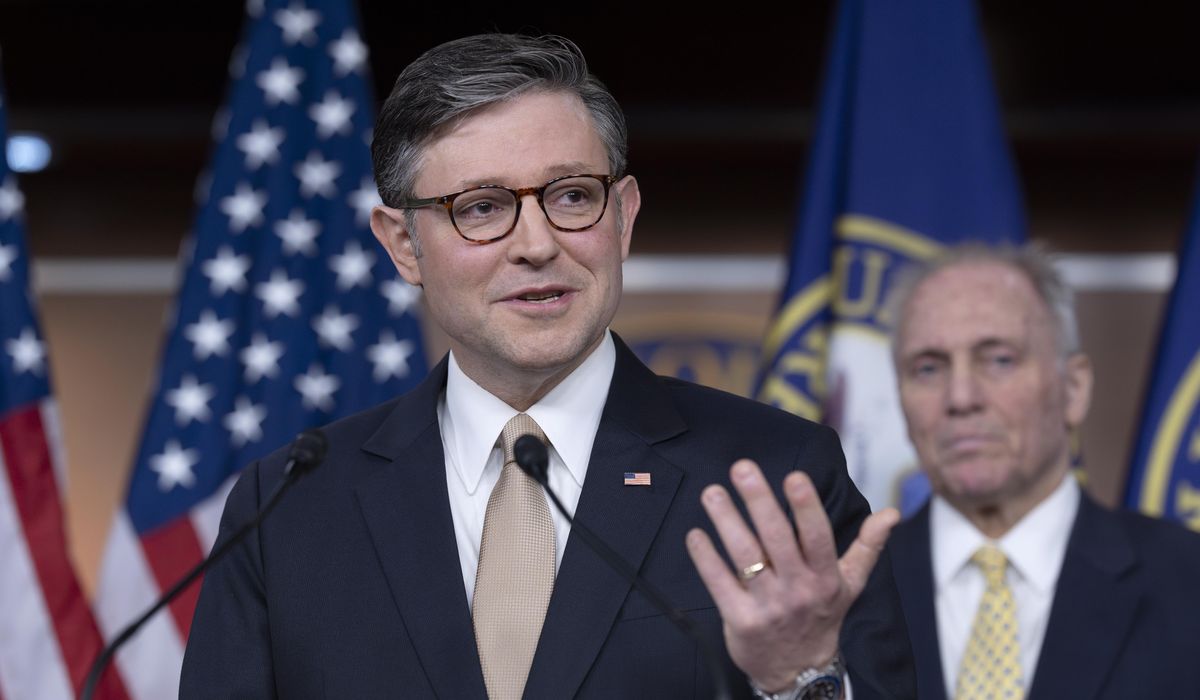


Congressional Republican met with President Trump on Tuesday to hash out a legislative strategy but have yet to land on the same page.
House Speaker Mike Johnson, Senate Majority Leader John Thune and their leadership teams met with the president for more than an hour without reaching an agreement on how to proceed with the budget reconciliation process.
Republicans plan to use budget reconciliation — a legislative vehicle that skirts a Senate filibuster — to ram through tax cuts, energy and border laws with party-line votes.
House Republicans largely favor one, colossal bill stuffed with marquee, while the Senate GOP prefers to move forward on a two-bill track that could speed passage of new border security measures and other items.
“We’ve got a plan pretty well formulated now, and I’m not going to tell all of you all the details of it yet, because that’s not how this works, but the party is working in unison,” Mr. Johnson told reporters upon returning to the Capitol. “The leaders in both chambers are working in a bicameral fashion, and the president is all on board.”
House Majority Leader Steve Scalise, Louisiana Republican, later told reporters that Republicans in the room had landed on the one bill approach, which Mr. Trump has publicly endorsed.
However, Mr. Thune was noncommittal.
“That discussion is always predicated on what we can get done, and we’re obviously all interested in getting to that same destination,” Mr. Thune said.
He said Congress is fast approaching key deadlines, including the March 14 deadline to fund the government and the deadline expected to hit this summer to raise the debt limit.
While the GOP almost universally agrees that preventing the Trump tax cuts from lapsing this year is a top priority, Mr. Trump’s wishes to hike the debt limit is a tough ask for some debt hawks.
Both chambers have thin majorities to contend with that could determine what will and won’t be a part of the reconciliation process, and just how quickly the work gets done.
Republican leadership has run members through a blitz-like course of meetings to identify red lines and areas of compromise, while also educating members who aren’t familiar with the process on how it works.
But first they need to land on a plan, and the clock is ticking.
“There’s a lot to do, and part of it is just figuring out how to stage it and what’s the best way to get all those results,” Mr. Thune said.
• Lindsey McPherson contributed to this report.
• Alex Miller can be reached at amiller@washingtontimes.com.
